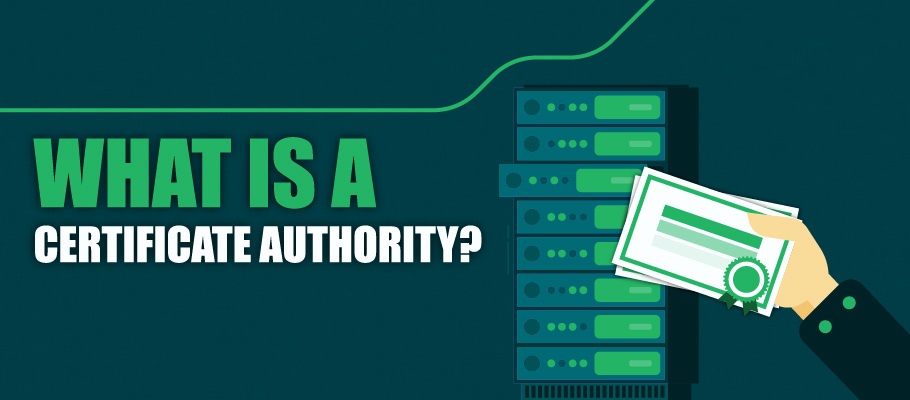What is a Certificate Authority (CA)?
Certificate authorities (CAs) play a crucial role in ensuring the security of online communications and verifying identities. However, what specific functions does a CA perform, and how do they instill trust in online interactions? This guide aims to provide clarity on these inquiries.

ad
What is the Role of a Certificate Authority?
A certificate authority, whether a company or organization, plays a crucial role in validating the identities of various entities such as websites, email addresses, companies, or individuals. It achieves this by binding them to cryptographic keys via the issuance of electronic documents referred to as digital certificates.
Digital certificates serve several purposes:
- Authentication: They act as credentials to verify the identity of the entity to which they are issued.
- Encryption: They facilitate secure communication over insecure networks like the internet.
- Integrity: They ensure the integrity of documents signed with the certificate, preventing alteration by third parties during transit.
ad
Through public key cryptography, these certificates enable secure, encrypted communication between two parties. The CA verifies the identity of the certificate applicant and issues a certificate containing their public key. Subsequently, the CA digitally signs the issued certificate with its private key, thereby establishing trust in the certificate’s validity.
How Does a CA Validate and Issue Certificates?
When applying for a certificate from a CA, the applicant starts by generating a public and private key pair. The applicant should maintain exclusive control and ownership of the private key, although in some cases, the CA may securely generate and store it in a hardware security module (HSM) under their control.
Afterward, the applicant submits a certificate signing request (CSR) to the CA, providing their public key and other identifying information through an online form.
The CA then proceeds to verify the applicant’s identity and their entitlement to the requested credentials, such as domain names for server certificates or email addresses for email certificates specified in the CSR. The validation process varies depending on the certificate type and validation level. For example, issuing an OV or EV SSL certificate may require submission of business documents and authentication of the applicant’s identity and domain ownership.
Once validation is successful, the CA issues the certificate containing the details and public key provided in the CSR. The CA also digitally signs the issued certificate using its private key, confirming the verification of the applicant’s identity.
What Are the Certificates CA’s Issue Used For?
The utilization of certificates varies depending on their type:
TLS/SSL certificates are installed on web servers by applicants to enable HTTPS and encrypt communication, with the private key securely stored on the server.
For code signing certificates, the private key is employed to digitally sign software, executables, scripts, etc.
S/MIME certificates designed for email security are installed in email clients, where they are utilized to encrypt, sign, or authenticate emails.
Client authentication certificates are installed on devices or users’ systems to authenticate their identity to servers or applications.
Document signing certificates are installed in document signing applications, enabling the application of certified digital signatures to electronic documents.
The appropriate handling of the private key is paramount for each certificate type and its intended purpose.
What Does a Digital Certificate Contain?
A digital certificate is an electronic document that links an identity to a cryptographic key pair through the signature of a CA.
These certificates typically include details such as:
- Domain names
- Email addresses
- Business or individual identity
- The public key used for encryption
- Issuing CA information
- Validity period
- Certificate serial number
- Signature for tamper prevention
Through certificate issuance, the CA affirms that the public key associated belongs to the specified identity.
The corresponding private key is safeguarded by the applicant. This pair of public and private keys enables secure encrypted communication via SSL/TLS and similar protocols.
How Do CAs Help Establish Trust?
For an issued certificate to gain trust, it’s imperative that the issuing CA is trustworthy. CAs establish this trust through certificate chains.
A certificate chain connects your end-entity certificate back to a trusted root CA certificate via intermediate issuing CAs:
- Trusted root CA certificate (trust anchor)
- Intermediate CA certificates issued by the root
- End-entity certificate issued to the applicant
Browsers, devices, operating systems, and applications typically come pre-loaded with root CA certificates from recognized authorities.
Certificate chains enable trust to be extended in a scalable and secure manner. Each link in the chain traces back to a trusted anchor. If any link in the chain is absent or deemed untrustworthy, clients encounter errors when accessing a site with that certificate installed. Hence, a complete and proper chain is essential.
Conclusion
Certificate authorities (CAs) are essential for securing online communications and verifying identities through digital certificates. By establishing trust mechanisms like certificate chains, CAs ensure the integrity of online interactions. Through their validation processes and tailored certificates, CAs facilitate secure encryption, authentication, and document signing. Understanding their roles is vital for maintaining digital security and reliability.
ad


Comments are closed.